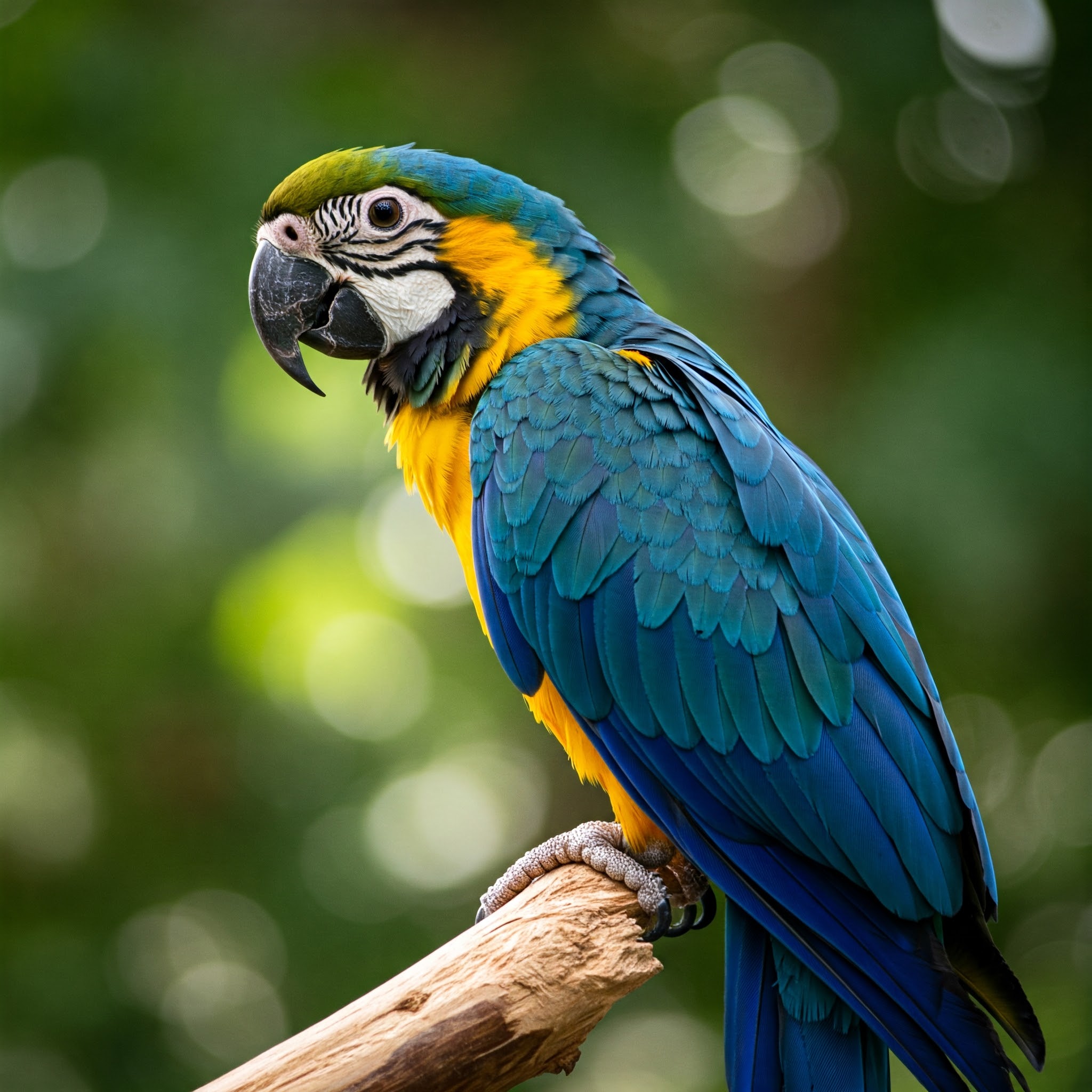
Parrot: A Stunning and Intelligent Bird Species
Introduction to Parrots
Parrots are fascinating birds, celebrated for their brilliant plumage and impressive vocal abilities. Belonging to the Psittaciformes order, which includes over 350 species, parrots have captivated humans for centuries due to their beauty, intelligence, and strong social behavior.
Key Features of Parrots
Parrots are easily recognized by their strong, curved beaks and highly dexterous, muscular tongues. They possess unique zygodactyl feet, with two toes pointing forward and two backward, making them exceptional climbers and adept at manipulating objects.
Ecological Significance of Parrots
Parrots play a vital ecological role, particularly as seed dispersers. Their diet of fruits, seeds, and nuts helps in maintaining the biodiversity of tropical forests by promoting regeneration and growth. Their social groups provide protection and aid in locating food.
Physical Characteristics of Parrots
The Parrot’s Spectacular Plumage
Parrots are known for their vibrant, colorful feathers. While green is the most common base color, many species also feature brilliant hues of red, yellow, blue, and orange. These striking colors are due to both special pigments and the structural arrangement of feathers, contributing to their dazzling appearances.
Anatomy Designed for Adaptation
The parrot’s beak is one of its most impressive features, powerful and curved to break through tough shells. Its upper jaw articulates with the skull for enhanced mobility, allowing the parrot to manipulate objects and food with precision.
Parrots also have zygodactyl feet, which help them hold onto branches securely while manipulating objects, and some use their feet as “hands” to grip food while eating.
Size and Diversity of Parrots
Parrots come in a wide range of sizes, from small species to large macaws.
-
Size: Ranges from 10 cm (for small parakeets) to 100 cm (for large macaws)
-
Wingspan: From 15 cm to 130 cm
-
Weight: From 30g (for small species) to 4 kg (for large macaws)
-
Lifespan: Varies between 15 to 80 years, depending on the species
Their eyesight is another fascinating trait, as parrots can see ultraviolet light that humans cannot, allowing them to detect ripe fruits and identify other birds.
Parrot Habitat and Distribution
Preferred Ecosystems
Parrots are primarily found in tropical and subtropical regions, though some species adapt to temperate climates. Their favored habitats are tropical rainforests, where food is abundant year-round. Parrots can also thrive in dry forests, savannas, and mangrove swamps. Some species, such as the extinct Carolina parakeet, were found in temperate climates.
Global Parrot Distribution
Parrots are widespread, occupying circumtropical regions of the world:
-
South and Central America (home to macaws, amazons, and conures)
-
Africa (including African grey parrots, lovebirds, and youyous)
-
Asia (loris, cockatoos, and parakeets)
-
Australia and Oceania (cockatoos, lorikeets, and parakeets)
-
Pacific Islands and the Indian Ocean
Adaptations of Parrots to Their Environment
Each parrot species has developed unique adaptations to survive in its environment. Forest-dwelling species often have green plumage for camouflage, while parrots in arid regions may have more subdued colors and behaviors suited for conserving water.
Nesting Habits and Environment-Specific Adaptations
Many parrots nest in tree cavities, relying on old trees to provide suitable nesting sites. Some species, like monk parrots, build large communal nests, while others, like certain Australian parrots, nest on the ground.
Some species, like the kea of New Zealand, have adapted to life in alpine environments, showing their remarkable adaptability.
Parrot Reproduction and Social Behavior
Sophisticated Social Structure
Parrots are highly social birds that often live in large groups, ranging from a few individuals to hundreds. These groups form complex social structures, and individuals communicate frequently using vocalizations and body language.
Social learning is crucial for parrots. Young parrots acquire behaviors by observing their parents and peers, which helps them adapt to their environment effectively.
Advanced Vocal Communication
Parrots are known for their sophisticated vocal abilities. Many species have distinct calls to signal danger, locate the group, or maintain social bonds. Some, like the African grey parrot, can mimic environmental sounds and human speech with incredible accuracy.
Besides vocalizations, parrots use body language to communicate. Wing position, feather erection, and head movements convey important messages to other parrots. For example, cockatoos may raise their crest to signal excitement or alarm.
Parrot Reproductive Cycle
Courtship and Pair Bonding
Parrot courtship rituals are elaborate, with males often performing dances, puffing up their feathers, and offering food to attract females. Once pairs form, they search for appropriate nesting sites, usually in tree cavities.
The female parrot lays between 2 to 8 white eggs, depending on the species, and the incubation period lasts from 18 to 30 days. The male feeds the female during incubation.
Development of Parrot Chicks
Newborn parrots are blind, featherless, and completely dependent on their parents for food and protection. Growth is slow compared to other birds, and chicks remain in the nest for 8 to 12 weeks before fledging. However, they often stay with their parents for several months after leaving the nest.
Remarkable Parrot Behaviors
Tool Use and Problem Solving
Parrots are highly intelligent and demonstrate problem-solving abilities. Some species, such as the yellow-crested cockatoos, use sticks to extract insects, while others, like the kea, are known to solve complex puzzles that require multiple steps.
Play and Social Interaction
Play is a vital part of a parrot’s daily routine. Parrots invent games and sometimes use objects to play, which helps stimulate their brains and reinforce social bonds. Some species also engage in dust bathing, a behavior that helps maintain their feathers and eliminate parasites.
